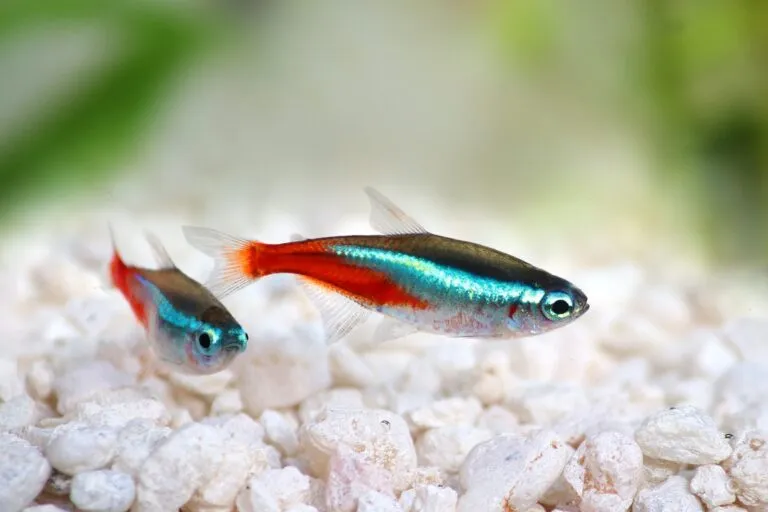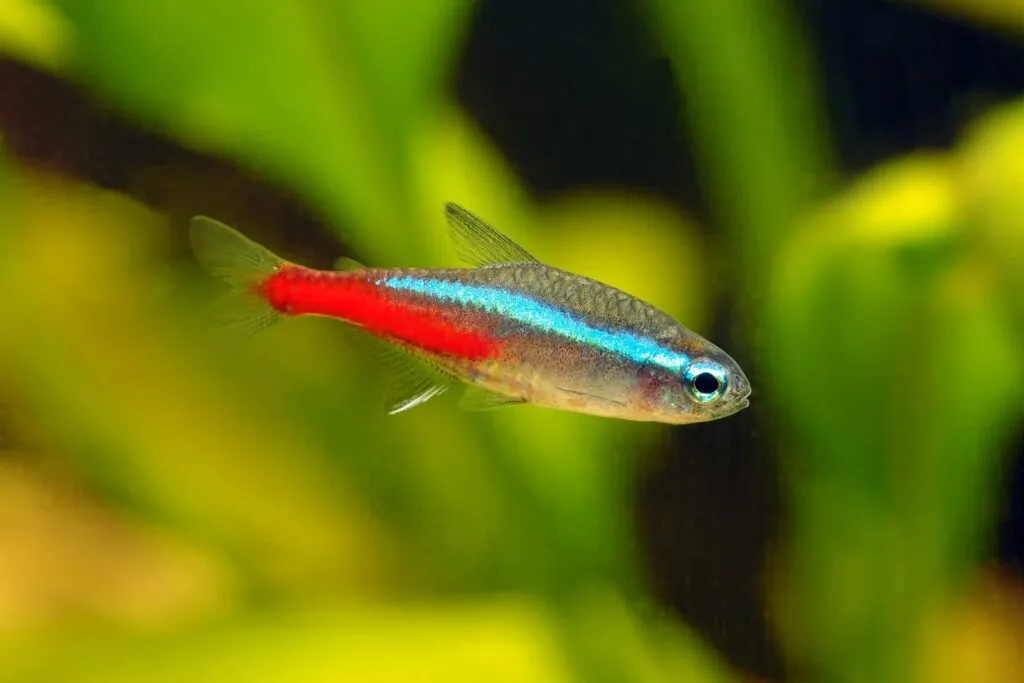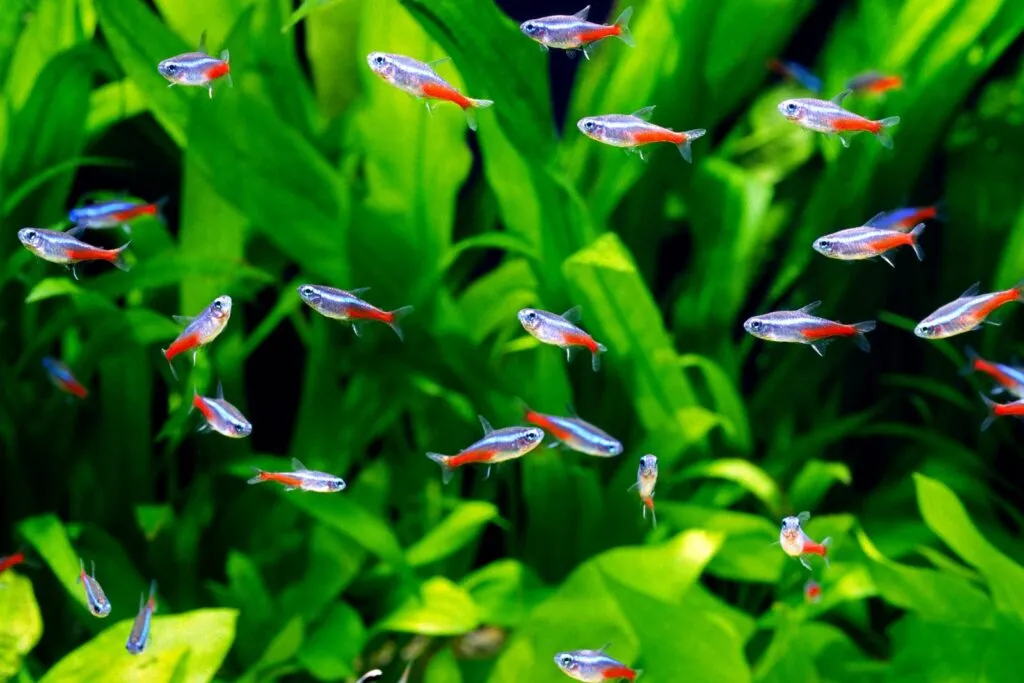A minimum of a 60-litre aquarium is recommended for neon tetras. Generally, the bigger, the better.
The ideal water temperature for neon tetras is between 20 and 26°C, akin to temperatures in their native Peru. The water should also have a pH of 5.0 to 6.8 and a hardness of 2 to 10 °dH.
Plants and Substrate
Neon tetras enjoy swimming plenty. Partially densely planting the aquarium and ensuring enough swimming space is crucial.
Fine-leaved water plants and floating plants to dim the light work best for aquarium planting. Additionally, a dark substrate and dim lighting conditions are advisable.
Group Size
This freshwater fish is a shoaling species, preferring groups of at least ten fish. However, neon tetras are not typical shoaling fish.
With adequate visual contact, they don’t swim in a tight shoal. Instead, tetras spread throughout the aquarium and only sometimes swim closely together.
Compatibility
Neon tetras are generally very peaceful, making them suitable companions for various ornamental fish. However, avoid fish species that might see neon tetras as prey. All fish species should have similar care requirements.
Suitable companions include guppies, platys, catfish and other tetra.


